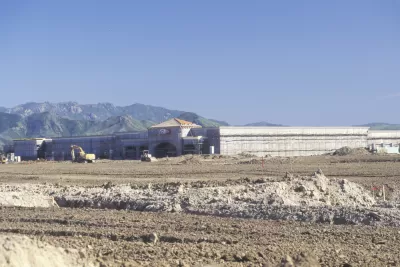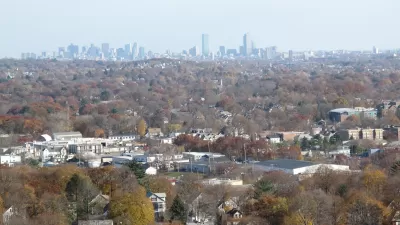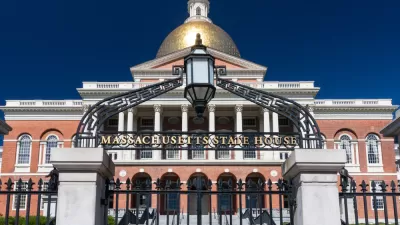The consequences of more than a century of planning and zoning are gaining more attention in the media as the country struggles through a pandemic. Will these lessons win new political support for more density in residential neighborhoods?

"Around the country, cities and states are grappling with how zoning rules have deeply codified racial inequity and exacerbated climate change," according to an article by Lauren Sommer.
Sommer is expanding the discourse that has followed President Trump's recent comments about the effect of progressive planning policies on the future of U.S. suburbs to focus on the racial and economic benefits of zoning reform. On the latter, Sommer writes: "Experts say tackling climate change will mean reshaping neighborhoods with a new focus on public transit, biking and walkability."
The article implies that by focusing on the environmental benefits of new kinds of density in residential neighborhoods, proponents of planning reforms might win over more of the Democrats who oppose density in communities like those in California, where upzoning bills like SB 50 and SB 827 failed to win the necessary political support in recent years.
The article also includes analysis of the accomplishments toward single-family zoning reform in Minneapolis and the state of Oregon, highlighting especially how reformers won political support for the idea of rescinding single-family zoning citywide during the process of developing and approving the Minneapolis 2040 Comprehensive Plan.
While the article doesn't necessarily include an information that will come as a surprise to regular readers of Planetizen, it does provide a nearly comprehensive overview of the environmental and racial effects of traditional approaches to planning and zoning, presenting the information to both a more general audience (i.e., of non planners) and a more specific audience (i.e., the kind of liberals that claim to support racial equality and environmental regulation while supporting the kind of planning reforms that would further both of those goals). Left out of the conversation in this article, however, is the reality and growing concern (as the housing market faces yet another epochal upheaval) that new residential housing capacity will be mostly snapped up by private equity firms and Wall Street interests, falling far short of intended goals for social and economic equity.
FULL STORY: Why Sprawl Could Be The Next Big Climate Change Battle

Planetizen Federal Action Tracker
A weekly monitor of how Trump’s orders and actions are impacting planners and planning in America.

Maui's Vacation Rental Debate Turns Ugly
Verbal attacks, misinformation campaigns and fistfights plague a high-stakes debate to convert thousands of vacation rentals into long-term housing.

San Francisco Suspends Traffic Calming Amidst Record Deaths
Citing “a challenging fiscal landscape,” the city will cease the program on the heels of 42 traffic deaths, including 24 pedestrians.

Amtrak Rolls Out New Orleans to Alabama “Mardi Gras” Train
The new service will operate morning and evening departures between Mobile and New Orleans.

The Subversive Car-Free Guide to Trump's Great American Road Trip
Car-free ways to access Chicagoland’s best tourist attractions.

San Antonio and Austin are Fusing Into one Massive Megaregion
The region spanning the two central Texas cities is growing fast, posing challenges for local infrastructure and water supplies.
Urban Design for Planners 1: Software Tools
This six-course series explores essential urban design concepts using open source software and equips planners with the tools they need to participate fully in the urban design process.
Planning for Universal Design
Learn the tools for implementing Universal Design in planning regulations.
Heyer Gruel & Associates PA
JM Goldson LLC
Custer County Colorado
City of Camden Redevelopment Agency
City of Astoria
Transportation Research & Education Center (TREC) at Portland State University
Jefferson Parish Government
Camden Redevelopment Agency
City of Claremont





























